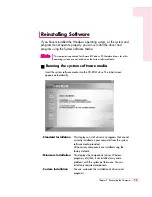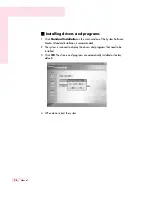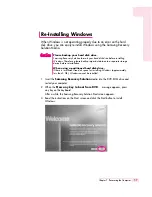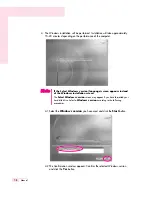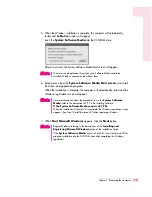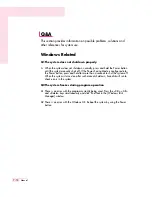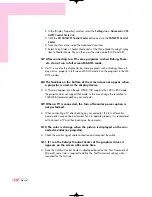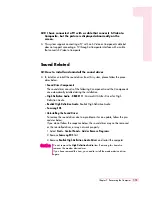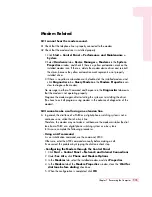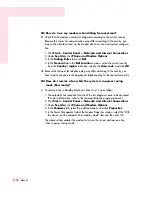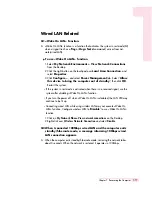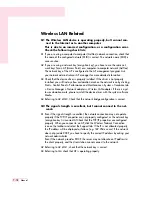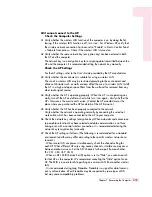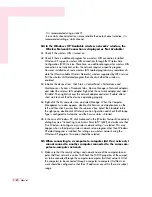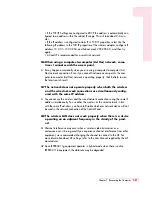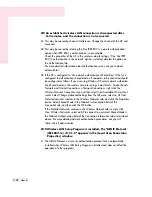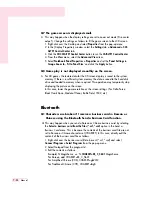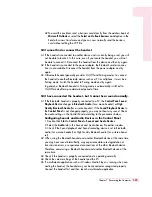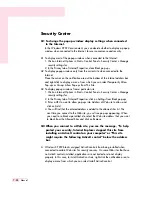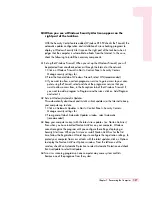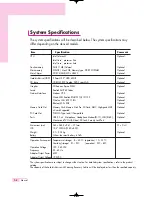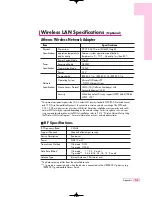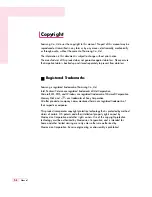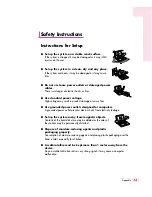
7-19
Chapter 7. Recovering the Computer
Q3 I cannot connect to the AP.
Check the Computer Settings
A1 Verify whether the wireless LAN function of the computer is on by doing the fol-
lowing. If the wireless LAN function is off, turn it on.- For Windows XP, verify that
the wireless network connection has been set to "Enable" in Start > Control Panel
> Network Connections.- Check if the wireless LAN is turned on.
A2 Verify whether the same network key (encryption key) has been entered in both
the AP and the computer.
The network key is an encryption key for encrypting data transmitted between the
AP and the computer. It is recommended setting the network key manually.
Check the AP Settings
For the AP settings, refer to the User's Guide provided by the AP manufacturer.
A3 Verify whether the environment is suitable for using a wireless LAN.
The use of a wireless LAN may be restricted according to the environment and
distance. Obstacles such as walls or doors affect the use of a wireless LAN. Install
the AP in a high and open space 50cm from the wall and far removed from any
other radio signal sources.
A4 Verify whether the AP is operating properly.- When the AP is not operating nor-
mally, turn off the AP and after a short while turn it on again.- Verify whether the
AP's firmware is the most recent version. (Contact the AP manufacturer or the
place where you purchased the AP for details of the AP firmware.)
A5 Verify whether the AP has been properly connected to the network.
Verify whether the network is operating normally by connecting the wired net-
work cable, which has been connected to the AP, to your computer.
A6 Check the network key settings (encryption key).When automatic code conversion
(a passphrase function) has been selected and data communication is not func-
tioning even with a normal wireless connection, it is recommended entering the
network key (encryption key) manually.
A7 Check the AP settings as follows. (The following is recommended for a standard
environment and thus may differ according to the specific wireless network envi-
ronment.)
- When several APs are present simultaneously, check the channel setting for
each AP. When different APs are using nearby channels, interference may occur
between electronic waves. Set the APs' channels further apart from each other.
(Ex: Ch1, Ch5, Ch9, Ch13)
- When an AP's SSID (Service Set ID) option is set to "Hide", you cannot search
for that AP on the computer. We recommend canceling the "Hide" option for an
AP. The SSID is a name for distinguishing one wireless LAN from another wireless
LAN.
- It is recommended using Long Preamble. Preamble is a signal for data transmis-
sion synchronization. Short Preamble may be supported by some types of APs
but may cause compatibility problems.
Summary of Contents for R40
Page 5: ......
Page 97: ...4 36 Manual ...
Page 109: ...5 12 Manual ...
Page 121: ...6 12 Manual ...

